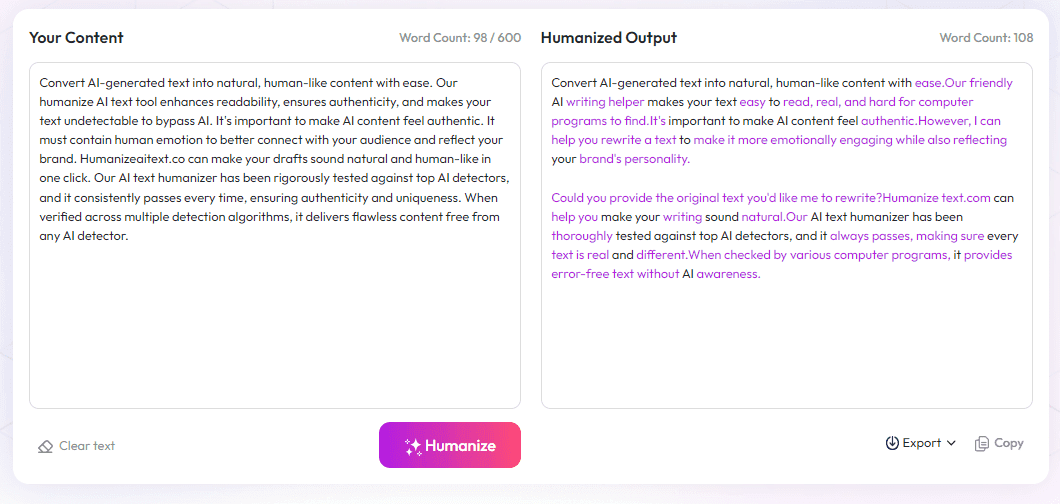Table of Contents
I get it—writing can feel scary sometimes, especially when you're worried about making mistakes or not being perfect. It’s easy to get stuck, thinking your work isn't good enough to finish. But what if I told you that embracing imperfections can actually help you finish your writing and enjoy the process?
Keep reading and you'll discover simple ways to let go of that perfectionism, like starting with small steps and having fun. You’ll learn how to see mistakes as chances to get better, not as roadblocks. Soon, writing will become more relaxed and enjoyable, no matter what your end result looks like.
In the next lines, I’ll share tips on accepting imperfection, writing freely, breaking tasks into manageable chunks, and celebrating progress—all simple ideas to help you love the writing journey as much as the finished piece.
Key Takeaways
Key Takeaways
- Starting with rough, imperfect drafts is okay; it helps ideas flow and reduces writer's block. Remember, first drafts don't need to be perfect—revising later will polish your work.
- Breaking writing into small tasks makes it less overwhelming and keeps you moving forward. Celebrate tiny wins to boost motivation and keep the process fun.
- Embracing your personal voice and unique perspective makes your writing authentic and engaging. Don’t try to imitate others—your style is what makes your work stand out.
- Mistakes are part of learning. Use feedback as a way to improve and see revisions as a normal step, not a failure, to developing your skills.
- Experiment with different styles, genres, or prompts to keep writing fresh and exciting. Having fun and trying new things sparks creativity and helps find what you love.
- Focus on progress by setting small goals, like finishing a paragraph or page. Recognize each step to stay motivated and make writing less stressful.
- Sharing your imperfect work with others builds trust and shows your genuine side. Authenticity and honesty connect more deeply with your audience.
- Stay flexible by trying new approaches as you grow. Your methods might change over time, and that’s okay—adaptation keeps your writing journey enjoyable.

Embracing imperfection in writing is one of the quickest ways to boost your creativity and reduce the stress that often comes with trying to produce perfect first drafts. Did you know that a study analyzing AI-assisted conversations found a 94% accuracy rate even when the data was imperfect or messy? This shows that human-generated content, which is naturally imperfect, can still be highly effective and meaningful.
Many writers hold back because they expect their first drafts to be flawless. But here’s the truth: every great piece of writing starts as a rough, imperfect mess. The first draft isn’t meant to be perfect; it’s meant to get your ideas down on paper. Waiting for perfection often leads to writer’s block or procrastination. Instead, focus on getting your thoughts out without worrying about mistakes — you can always revise later.
Research on initial drafts reveals that the most successful writers see their early versions as opportunities for growth. Struggling with your first attempts is normal—think of it as paving the road for a better, more refined piece. By accepting that your first draft will be imperfect, you remove the pressure to get everything right immediately, which allows your ideas to flow freely. Plus, stories and ideas naturally evolve through the editing process, so perfection isn’t the goal at this stage.
In fact, marketing experts note that a strategic imperfection can make your content stand out. In a world flooded with polished, often overly refined AI content, human touches that show flaws or quirks can build trust and authenticity with your audience. This is why embracing imperfections in your writing process isn’t just freeing; it can also make your work more relatable and engaging.
To make embracing imperfection easier, try breaking your writing into small, manageable tasks. Instead of stressing over finishing a perfect chapter, set a timer and focus on a single paragraph or idea. This approach makes the process feel less overwhelming and allows you to build momentum, celebrating each little victory along the way.
Remember, mistakes aren’t enemies—they’re teachers. Viewing feedback as an opportunity to learn and grow, rather than as a criticism, helps you develop your writing skills. Many successful authors see their early work as a playground for experimentation, not a final product. So, don’t be afraid to experiment, make mistakes, and have fun with your writing journey. This mindset fuels creativity and makes the process far more enjoyable than chasing an impossible ideal of perfection.
By accepting that your work doesn’t need to be perfect from the start, you set yourself free to write more naturally and creatively. Authentic stories and ideas come from moments of vulnerability and imperfection—embracing those moments can lead to surprising breakthroughs and a more joyful writing experience.

6. Experiment and have fun with your writing process
Trying new styles, genres, or prompts can keep your writing fresh and engaging.
Don’t be afraid to push boundaries or write silly, unusual, or even messy drafts.
For example, setting themed challenges, like writing a story in ten minutes or using specific words, can spark creativity.
Remember, the goal is to enjoy the process and discover what excites you, not to create perfect work every time.
Allow yourself to take risks and see mistakes as part of the fun rather than failures.
Sometimes, the weirdest ideas lead to the most interesting stories, so let your imagination run wild.
7. Focus on progress and celebrate completing each step
Breaking your writing goals into small, achievable milestones makes the process less overwhelming.
For example, set a goal to finish a paragraph, a page, or an outline before celebrating your progress.
Recognizing these small wins keeps you motivated and builds momentum toward completing larger projects.
Consider creating a simple reward system—like a treat or a break—each time you hit a milestone.
Remember, every step forward is a sign that you’re moving closer to finishing your work.
By celebrating these moments, writing stays fun and less stressful, even when things get tough.
8. Trust your voice and embrace your unique perspective
Every writer has a distinct voice, shaped by their experiences, background, and worldview.
When you trust that your way of telling stories is valuable, it becomes easier to write authentically.
This means resisting the urge to imitate others or overly polish your work early on.
For example, write as you speak or include your personal quirks—you might surprise yourself with how genuine your writing feels.
Over time, embracing your perspective will help your work stand out and forge a stronger connection with readers.
Think about how famous authors like Nora Roberts or David Sedaris have unique voices that make their stories special—your voice deserves the same attention.
9. Accept that revision is part of the process, not a sign of failure
Many writers hesitate to start because they’re worried about making mistakes or rewriting endlessly.
In reality, revision is how all polished pieces come together, whether in novels, articles, or marketing content.
Even published bestsellers go through multiple rounds of editing—think of it as sprucing up your work rather than fixing a flaw.
Start by getting your ideas down first, then revisit and refine without judgment.
Tools like (https://automateed.com/autocrit-review-2/) or (https://automateed.com/autocrit-review-2/) can help identify areas to improve, but only after you’ve first created your draft.
Remember, each revision gets your writing closer to the voice and clarity you seek, so don't fear it—welcome it.
10. Use imperfect drafts to connect with your audience authentically
Real people relate to stories that feel genuine, flaws and all.
Sharing parts of your process or being open about your struggles can make your content more relatable and trustworthy.
For instance, acknowledging that your first drafts are rough shows humility and honesty.
This can resonate with readers who also fear imperfection or struggle to start.
Similarly, social media posts that showcase your personality through imperfect moments often receive more engagement.
Remember, your imperfections can become strengths—adding personality and authenticity to your work.
11. Stay flexible and adaptable as you grow
Writers evolve, and so should your approach to embracing imperfection.
What works during one project might not fit another, so be willing to try new techniques or change your routine.
For example, if breaking tasks into smaller pieces helps now, but later, whole chapters feel manageable, switch up your system.
Remaining open-minded prevents burnout and keeps the process feeling fresh and exciting.
Plus, learning from each experience helps you refine your process naturally—no pressure, no perfection required.
Over time, you'll find your own rhythm that balances speed, quality, and fun.
FAQs
Accepting imperfection helps you overcome the fear of mistakes, allowing you to write more freely and complete your work faster. It encourages progress and reduces self-criticism, making the writing process more enjoyable and productive.
Begin by focusing on getting your ideas down without editing. Set a timer or limit to keep progress steady. Remember, you can always revise later—initial drafts are about capturing your thoughts freely.
Dividing your work into smaller parts makes writing less overwhelming. It helps you stay focused, track progress easily, and keeps motivation high as you complete each segment one at a time.
View mistakes as learning opportunities. Use feedback to identify areas for improvement, and remember that revisions are a natural part of becoming a better writer. Don't be afraid of constructive criticism.



